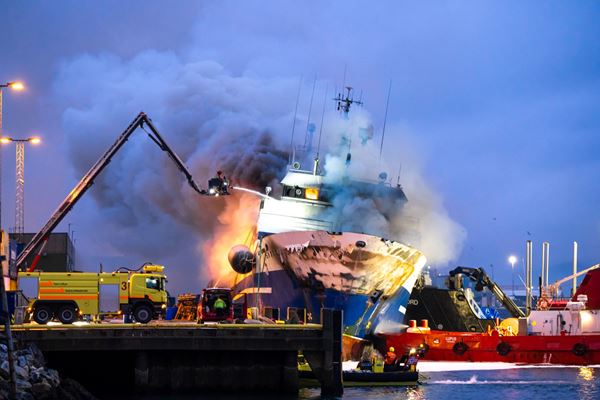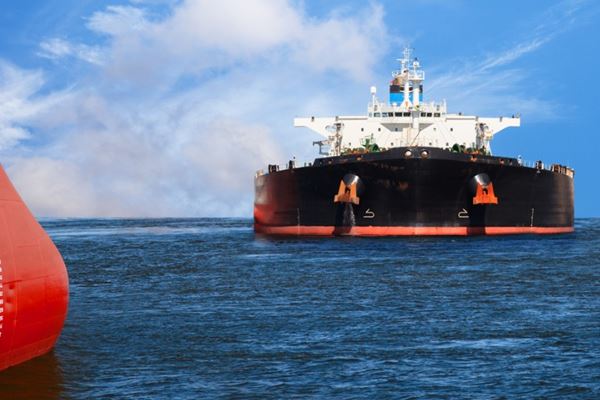Offshore Energy Disasters: Drilling Down into True Root Causes to Prevent Repeat Incidents

Following an initial unexpected failure in an offshore energy facility, major losses often occur when multiple additional factors compound, which results in significant levels of destruction and business interruption. When analyzing a major loss event, experts need to look beyond the initial causal factors to identify the true root causes of a loss. These root causes are often related to overall processes, organizational policies, or procedural oversights.
Understanding the root causes of why a loss occurred allows organizations to make changes that create a safer working environment and prevent future similar incidents and their resulting losses, which benefits both insurance policyholders and issuers.
Why Do Large-Scale Energy Disasters Happen?
Energy industry disasters typically have wide-ranging consequences due to the presence of multiple factors, including:
- Initial damage to infrastructure and equipment
- Personnel injuries or fatalities
- Cost of operation/business interruption
- Repair vs. replace
- Potential environmental factors
In their first moments on a scene, an investigation team typically encounters only a veiled look at what really took place and its initiation point. In the aftermath of the event, what is visible are distorted elements, damaged parts that are no longer identifiable, the chaos of the emergency response and damage control, and in some cases, the loss of associated infrastructure.
Creating a Team to Investigate an Energy Incident
The team created to investigate an offshore energy disaster must include personnel from the operating company in addition to subject matter experts (SMEs) based on the event and the processes involved.
Personnel from the company are the best resource for information on the current operating conditions and overall procedures at a facility. They work in collaboration with SMEs, who provide the insight necessary to identify underlying factors that were key in causing the event.
This collaboration between personnel and SMEs makes the investigation more efficient since it allows SMEs to better understand the overall systems and day-to-day operations in place at the time of the incident and track down appropriate documentation.
The Importance of Data Preservation in Major Losses
An investigation team should begin their analysis of an incident soon as it is safe and possible to do so. Even though the emergency response, company policies, and on-site conditions may delay the start of an investigation, the earlier work begins, the more likely it will be to keep data fresh and ensure that no unintended changes take place in critical areas. One of the most common difficulties related to investigating large-scale energy incidents is when systems and computers are shut down before data backups occur, resulting in the deletion of important information.
Ideally, a facility will have pre-established procedures in place to protect data in the event of an incident. They will also be able to assist with field evidence preservation by limiting access to the area to approved personnel only and maintaining a log of access to ensure no material is moved or conditions altered by accident or on purpose.
Preserving data at the outset of an investigation will help investigators properly analyze the true cause of the event later. On the other hand, a lack of data control at the beginning of an investigation can significantly hinder its progress and overall success. Leaving this step for later can result in significantly higher costs and a longer period of business interruption.
Applying Nuclear Industry Standards for Risk Reduction and Incident Evaluations
After securing the scene and preserving data, the next step in investigating an offshore energy incident is understanding the overall policies and procedures that were in place when it happened. An investigator will often ask for documentation of these policies as part of their investigation.
Understanding the policies and procedures that were in place at the time of an incident is an important part of root cause analysis techniques that were originally pioneered by the nuclear industry. Expert investigators often receive training based on the nuclear industry’s root cause analysis techniques and apply them to all types of incidents, even those that don’t occur in dedicated nuclear facilities, because they are highly consistent and efficient ways to evaluate an incident and reduce future risk.
Two of the basic assumptions made in nuclear industry event analysis are that policies and procedures are intended to set people up for success and that when events happen, it’s likely not due to malice or individual human inadequacy. Investigators look at the bigger picture, knowing that it takes more than a single event to produce a major incident and loss.
Outside of the initial event trigger, the cause of a major incident is usually overall weaknesses in the systems in place at the time, failures in the multiple layers of protection that these policies are meant to provide, and cascading consequences set in motion due to these systemic issues. An investigator will look at many factors including operation requirements, equipment maintenance policies, and training for personnel operating the equipment on the front line.
Root Cause Analysis and Recommendations
The main goal of a root cause investigation is not the assignation of fault. Instead, understanding the event is only the first step towards enacting changes that will allow the customer to resume operations with an improved level of safety and reliability for their front-line personnel and equipment.
After restoring business operations, a good root cause investigation will identify weaknesses that were not known to the customer, often surprising them by identifying policies and practices that can be done better. Then, the overall objective is to create recommendations that reduce the risk of a repeat event as much as possible.
These recommendations must:
- Be practical and efficient in addressing the identified factors that caused the event
- Be clear and actionable
- Be based on the data developed during the investigation so owners and operators can implement them easily
- Cover the basic changes necessary to avoid the conditions that resulted in the event
- Build towards more in-depth and meaningful changes to the operating procedures and policies that will prevent other incidents from occurring in the future
Case Study: Separator Vessel at an Offshore Platform
An example of an investigation where more than one procedure was identified as needing improvement was the sudden failure of a separator vessel at an offshore platform. The investigation determined that this failure was the result of the accumulation of factors that resulted in a weak interface between the separator body and its spherical end.
The investigation discovered that at the time of the fabrication of the vessel, there had been no verification that the components of the vessel and the welded connection between the body and the vessel had been properly treated. This fabrication error resulted in an area of high residual stresses and an increased tendency towards uncontrolled crack growth.
Regular inspections during the vessel’s service life did not find any flaws within the detectable range of the non-destructive evaluation (NDE) methods. The flaw, a crack, that resulted in the failure reached a critical size that was under the detectable range, which resulted in a sudden and uncontrolled failure.
As a result of the investigation and its findings, the company modified its inspection plans for similar vessels and its procurement procedures to ensure that the possibility of inadequate heat treatment after a weld would be significantly reduced for future vessels.
Due to the changes in inspection procedures, the company was also able to identify additional vessels with similar conditions and appropriately addressed them for continued safe operation.
Benefits of Root Cause Analysis for Insurers
A root cause investigation after a failure event will help prevent insurance companies from having to cover losses that push the limit of their policies and from having to pay for trends resulting from weak procedures and policies of repeat claims based on the same conditions. Properly developed recommendations from an expert investigator will result in clients operating in safer environments, which reduces the risk of repeat events with major consequences.
Working with specialized major loss professionals on multidisciplinary teams necessary for a proper investigation of this magnitude and with the expertise of identifying the true causal factors and root causes, resulting in a clear understanding of the event and in recommendations that will benefit the customer and the insurance carrier by preventing them from happening again.
Our experts are ready to help.



